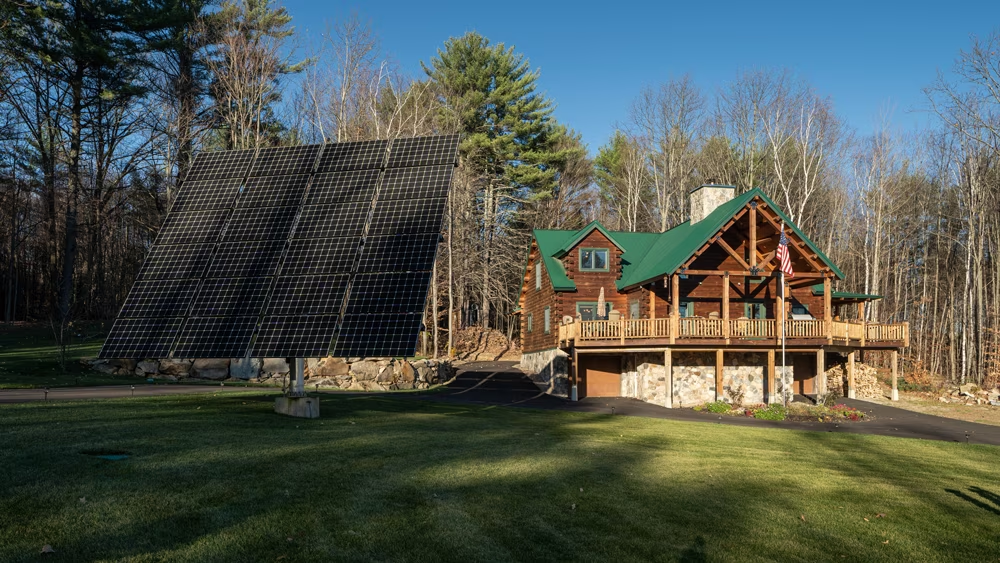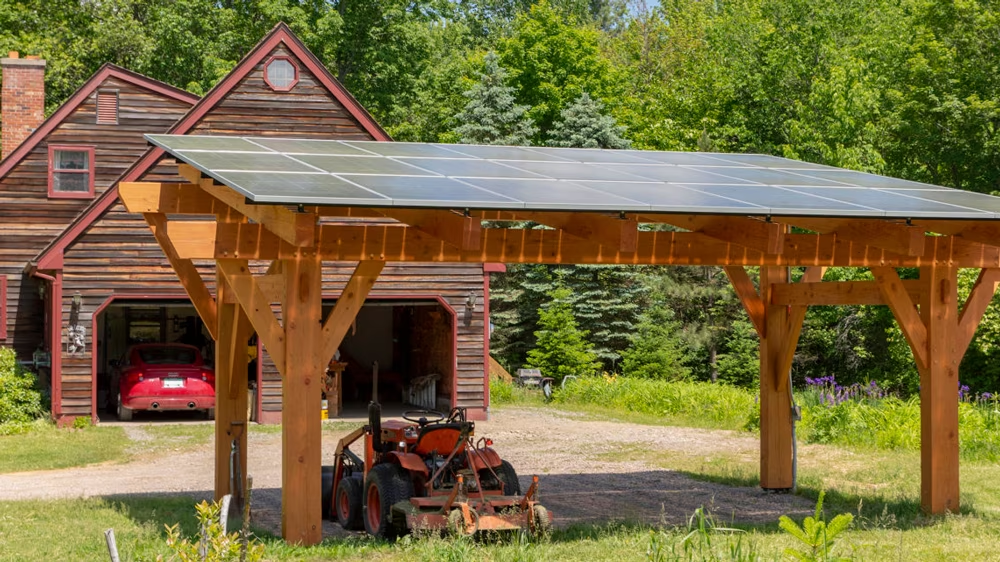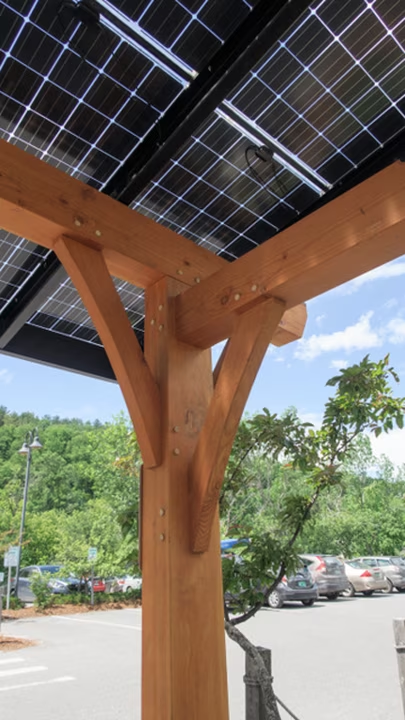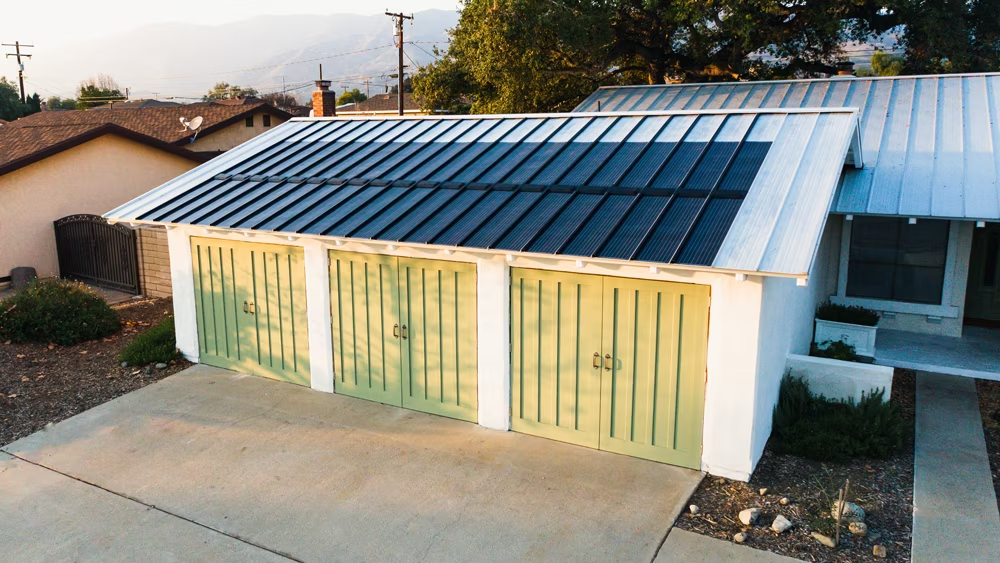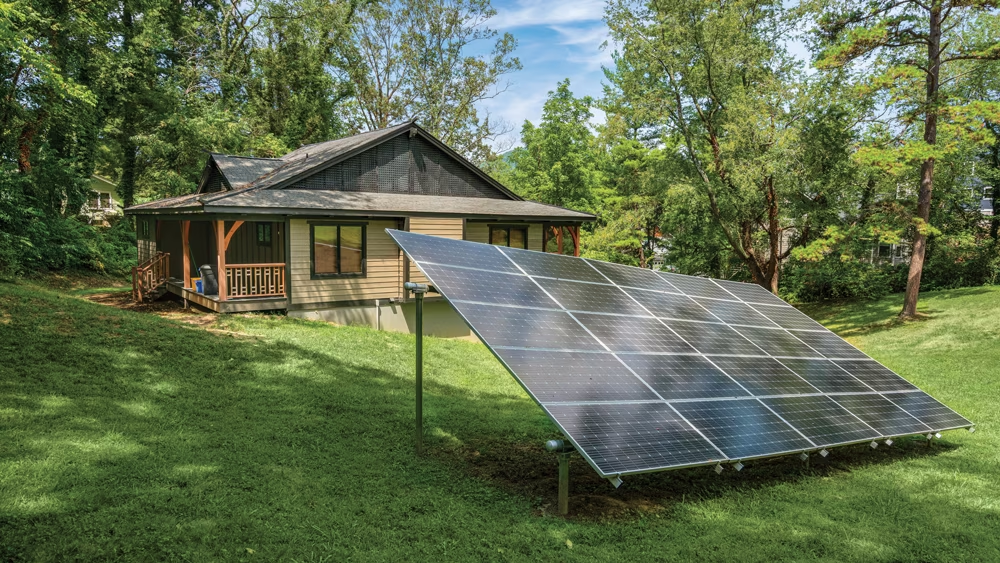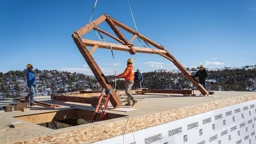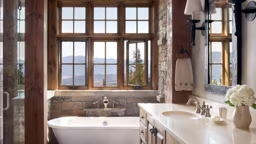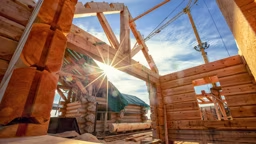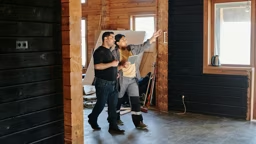Written by Mike Haskew
Making the most of the log and timber home experience has always involved a strong connection to the environment. So, it’s no great leap to think “solar” as an energy source when it’s time to build or renovate. And now, thanks to innovative new ways to incorporate solar into one’s design, log or timber homeowners who have dismissed solar in the past can now reimagine the possibility of comfortable, clean energy.
“The first benefit is the solar alternative to the present reliance on fossil fuels and its benefits to the homeowner and society as a whole,” explains Portland, Oregon-based Jonathan Orpin, the founder of New Energy Works, which specializes in timber framing and energy-focused design. “Solar can do a lot with the use of the sun as it hits panels and a chemical reaction turns that energy into electricity for use in your home.”
On the leading edge of solar product application, New Energy Works has teamed with SunCommon to produce a line of timber-framed structures called “solar canopies” that provide all the benefits of solar energy while also harmonizing with the natural aesthetic. After all, the look of solar panels has been many homeowners’ biggest barrier to adoption.
“I would suggest that we celebrate the look of solar panels,” says Jonathan. “They become part of the home’s profile. What we’re doing with solar canopies in the carport is pitching it really anywhere on the land that you want, and a timber-framed carport can be quite lovely to look at and become a very nice vehicle for holding these solar panels.”
Solar canopies blend well with the lines of a carport or outbuilding, often providing enough electricity for an entire home without the installation of panels on the main roof, eliminating the old concerns about aesthetics. Furthermore, the cost-benefit analysis is quite positive. “The cost of energy per kilowatt hour has become lower, and it is less expensive to install solar panels,” relates Jonathan, “so the return on investment is better than ever, since electricity cost is going up while solar cost is going down.”
Ben Talplacido, vice president of brand strategy and marketing at Sunflare in La Verne, California, says the future of solar is … well ... bright.
“I think the best thing about solar is its part in the whole renewable energy community,” he reasons. “It makes the world a better place.”
Sunflare is contributing to that ideal with its own creative solutions. “We came up with a product almost a year ago called our Powerfit 20,” Ben comments. “It goes between the seams on a standing seam rooftop, and what that does is allow for a low profile. While a lot of people would take a darker roof and then use our panels, it almost appears that there are no panels on top.”
Sunflare panels gather solar energy from dawn to dusk, and their bypass diode feature allows the maximum production even when a passing cloud or other obtrusion may cast shade on a portion of the panel. Efficiency is increased substantially. “If one cell is affected, the diode shuts down only that one cell, rather than the entire panel,” says Ben.
Ben advises a comprehensive evaluation when solar energy is potentially a part of the construction or renovation process. Federal, state and local tax credits are available depending on the location of the home. Net energy sales are possible, should the home’s solar electricity production exceed its needs. In other words, in certain areas, surplus electricity can be sold to the grid, and the homeowner receives a check.
Plenty of information is available to log or timber homeowners considering solar energy, including a section titled “Solar 101” on Sunflare’s website, and understanding the role that solar power can play in both energy and cost efficiency will require some individual research. “Do your due diligence and learn as much as you can about solar, Ben advises. “To choose an installer, the first thing I would do is read reviews. There are well-known and reliable installers out there who have been around a long time.
“Also, you can save money if it’s a good system with hardware and parts that can last for decades,” he adds. “Do the math and determine if you can pay for the solar installation and equipment over a certain period of time. That will help in finding the return on investment. And then, when you consider positioning your foundation, the installer will geolocate your home and determine through available technology how much sun the home would get in a given year, helping to locate it in an area where trees and such don’t block sunlight.”
Environmentally friendly, innovative, affordable and good-looking, a smart solar-power plan can be a chic and efficient addition to log and timber construction and homeownership.




